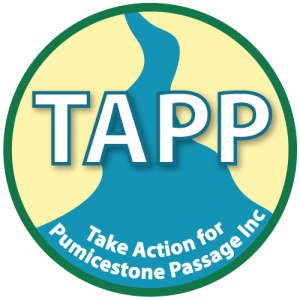Diane Oxenford, Bribie Island Environment Protection Association (BIEPA)
In 2006 Diane and John Oxenford retired to Australia after 30 years raising three children in the frozen boreal forests of northern Canada and then the prairies, far from the warmth and smell of Queensland’s beaches. Serendipity brought them to Bribie Island, a unique place where the sights, sounds and smells of Nature were all around. The book that triggered Diane’s quest for understanding the coastal ecology was “The Living Beach” by Canadian environmentalist, Silver Donald Cameron. Over the years, Diane has metamorphosed into many colloquial identities eg “Wolf Lady”, “Pain in the Butt” (to Politicians and Company Executives), “Turtle Lady”, and long-term President of BIEPA.
Abstract:
Bribie Island is a fauna and flora sanctuary situated within the Pumicestone Passage and Moreton Bay, protected under the UN Ramsar Convention on Wetlands of International Importance. Coastal development and unsustainable tourism models are incrementally destroying Bribie Island’s natural assets, causing a loss of habitat for endangered and threatened resident and migratory species protected under the UN Convention. The sand dunes along the full length of Bribie Island are under threat from sea level rise and increased intensity and frequency of weather events. One of the major threats to the stabilisation of the sand dunes is uncontrolled pedestrian and vehicle access which is destroying the fragile beach ecology and the ecosystems which are interdependent. BIEPA is a group of concerned citizens which almost 40 years ago as a result of the decrease in fauna sightings. The Bribie Islanders came together to promote the concept of Bribie Island becoming a fauna sanctuary and the protection of native flora. While recognising the pressures for development on the island, BIEPA’s objective is to ensure development occurs in harmony with the natural environment, and does this through a number of Citizen Science projects, educational and creative endeavours, and lobbying decision-makers.
